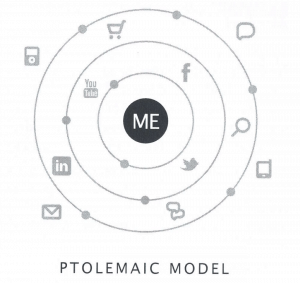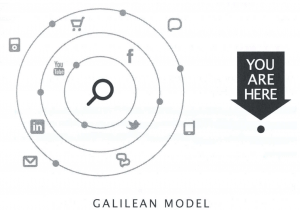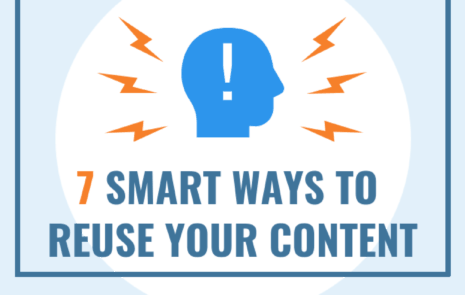
Create A Great Marketing Message: Inquire Before You Inform
How persuasive is your marketing message?
Is it all it could be? Or could you make it even better?
Successful marketing messages persuade customers when they follow the three I’s — inquire, inform and inspire.
INQUIRE: Inquire to understand who your audience is and what they really want. Talk to prospects and customers face-to-face, conduct primary and secondary research, and build robust buyer personas.
The better you know your customers, the stronger your message will be.
It’s crucial to understand what your customers worry about most. Observe how they talk about it, in their own words. Listen hard to uncover the emotion behind their words.
How do your customers speak about their pain points? Where do they get stuck? What kinds of solutions are they searching for? What have they tried? Why haven’t they take further action yet?
The more deeply you understand the answers to your customers’ questions, the better you can answer customers’ #1 question – what’s in it for me (WIIFM)?
Recently Howard Tullman, CEO of Chicago incubator 1871, pointed out a great example of not understanding what customers really want. He told a story about a company that commissioned a survey to dig deeply into how patients look for doctors.
First, the survey asked 500 doctors to talk about how their patients look for doctors. The researchers asked: What are patients’ top 5 criteria for choosing a doctor?
The doctors answered most logically. They said that patients look for doctors based on these criteria:
- Specialty
- Board Certified
- Technical Skills
- Referrals – Word of Mouth
- Insurance Plans.
Then the researchers asked 1,000 patients how they look for doctors. What were their top 5 criteria? Patients said:
- Location
- Office Hours
- Parking
- Insurance Plans
- Staff Courtesy.
Ouch! The survey made painfully clear that doctors don’t really know how patients go about finding them. In fact, doctors and patients agree on only one of five criteria: insurance plans.
Asking doctors how patients look for doctors only reveals how doctors look for doctors.
Marketers see such disconnects all the time between sellers and buyers. Sellers want to talk about certain things that buyers just don’t care about.
That’s not useful to buyers. That’s why smart marketers inquire before they inform. By informing customers about the right things, the things they care about, content marketing gains a lot more traction.
In a world where people are bombarded by 1,500 to 30,000 messages a day, messages that don’t answer customers’ crucial question of WIIFM are simply ignored.
Intelligent inquiry makes your message far more likely to succeed.
INFORM: Now that you understand which information customers are looking for, you can answer their questions by creating a message that informs them fully.
Great content marketing makes customers into smarter buyers. At the end of the day, your message must be driven more by what customers need to know than by what you want to say.
To reach customers, your message must appear in the media they prefer –videos, websites, email newsletters, social media, E-books or white papers – and in the places they frequent.
Andrew Davis, in his book Brandscaping, shows two ways of looking at content marketing: his Ptolemaic and Galilean views of the customers’ universe. These two universes amount to a litmus test for content marketing that’s likely to be effective with customers.
A Ptolemaic view imagines that your website is at the center of the customers’ universe. The problem is, customers don’t usually spend much time in your universe. If customers have to travel to your universe to hear your message, expect very few to hear it.
Instead, deliver valuable information to the places where customers already congregate in a Galilean universe: search, social and electronic media.
Do the work to understand where customers are in the buyers’ journey. As the buyers’ journey progresses, customers’ questions change along the way.
By listening closely to these questions and analyzing which information customers use most, you see which buying issues have been resolved and which issues are still lingering.
INSPIRE: To inquire and inform are necessary, but not sufficient, to create the best possible marketing message. Now inspire customers to take action.
Inspire customers with ideas from people they look up to – their influencers. Influencers may include teachers, journalists, analysts, reviewers, subject matter experts and leaders.
It’s valuable to understand exactly who your customers look up to. Whose opinion do they really respect? Amazon reviewers? Consumer Reports? A financial analyst or broker?
Buyer persona research is crucial to help you identify these top influencers. Tools such as Buzzsumo can help too.
In certain categories, experts don’t really matter much. In your category, perhaps customers are more influenced by peers, family and friends.
When buyers focus on peers, show them information that comes from people like them. Tell stories about people like them, who have successfully solved problems with your product or service.
Even better, get out of the middle. Enable customers to tell their own stories through videos, reviews, ratings and testimonials.
When your customers feel fully informed, inspire them with your call to action (CTA). Help them move forward and complete the buyers’ journey.
Your CTA may prompt a soft conversion:
- You’ve read the blog, now see the video.
- You’ve seen the video, now download the tips and tricks.
- You’ve downloaded the tips and tricks, now use our checklist.
Or, your CTA may prompt a hard conversion:
- For a comprehensive e-book, register now.
- You’ve completed your checklist, now chat with a specialist.
- With all your questions answered, here’s where to buy.
A great marketing message inquires, informs and inspires. It persuades customers to move forward, rather than settle for the status quo.
To create marketing messages that consistently win, use a 1-PageTM Message Map.
Related Posts
Marketing Moves: “Q&A With George Stenitzer”
The role of technology marketers is changing quickly. So marketers need to embrace content marketing, take advantage of digital and social media, and challenge...
Who understands healthcare content?
Facing a life-threatening illness, Ahava Leibtag combed the Internet for every single bit of information about her condition. But the content she found didn’t...
“Can content marketing become an overall site content strategy?”
A marketer at MSC Industrial asked, “Can content marketing become an overall site content strategy? Should we take a ‘content-first’ approach to help with...
Top 100 Content Marketing Question: How can I leverage existing content in my content marketing strategy?
How can I leverage existing content in my content marketing strategy? When you already have good content, do you always need to create more?...







